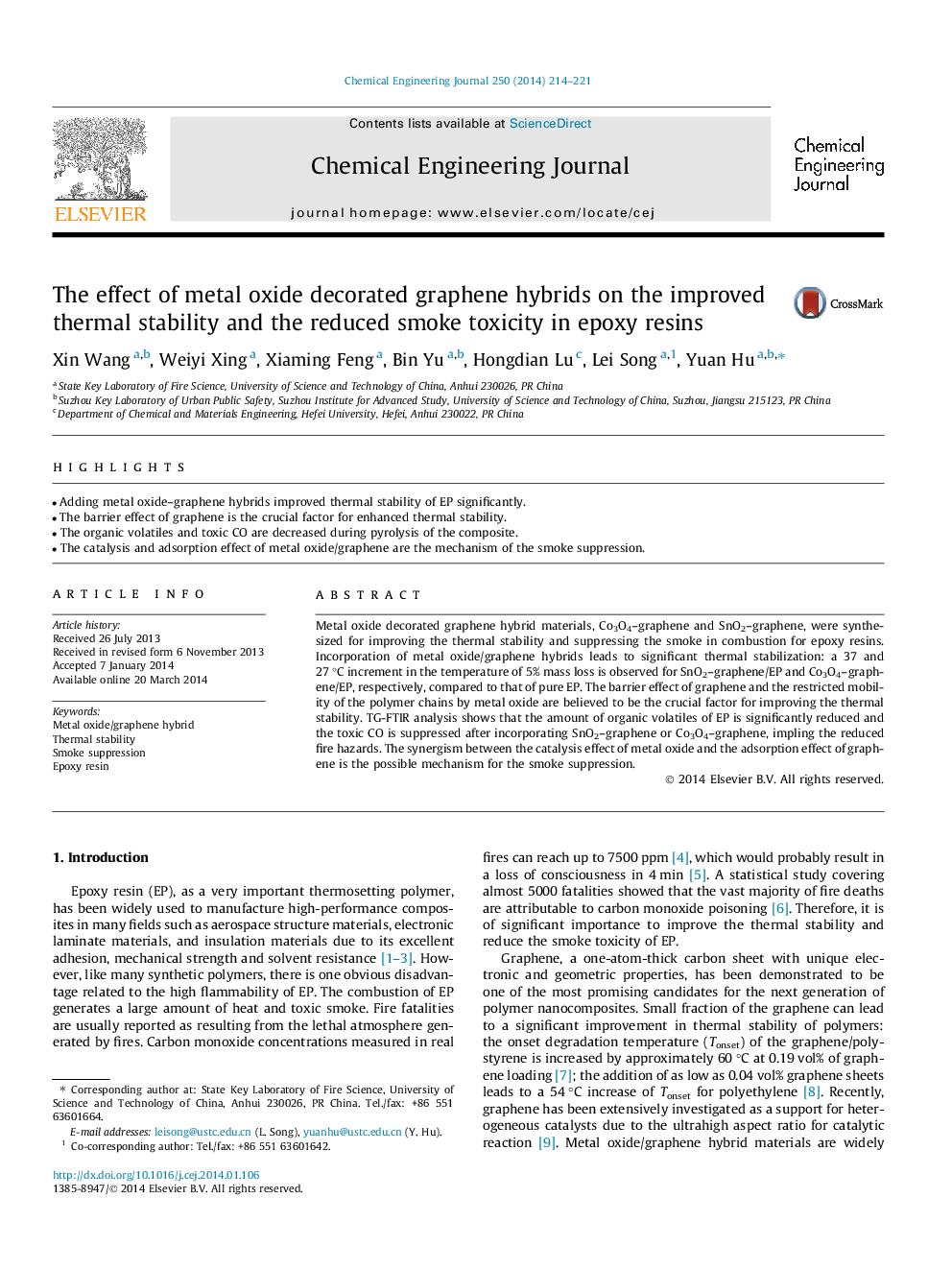| Article ID | Journal | Published Year | Pages | File Type |
|---|---|---|---|---|
| 147388 | Chemical Engineering Journal | 2014 | 8 Pages |
•Adding metal oxide–graphene hybrids improved thermal stability of EP significantly.•The barrier effect of graphene is the crucial factor for enhanced thermal stability.•The organic volatiles and toxic CO are decreased during pyrolysis of the composite.•The catalysis and adsorption effect of metal oxide/graphene are the mechanism of the smoke suppression.
Metal oxide decorated graphene hybrid materials, Co3O4–graphene and SnO2–graphene, were synthesized for improving the thermal stability and suppressing the smoke in combustion for epoxy resins. Incorporation of metal oxide/graphene hybrids leads to significant thermal stabilization: a 37 and 27 °C increment in the temperature of 5% mass loss is observed for SnO2–graphene/EP and Co3O4–graphene/EP, respectively, compared to that of pure EP. The barrier effect of graphene and the restricted mobility of the polymer chains by metal oxide are believed to be the crucial factor for improving the thermal stability. TG-FTIR analysis shows that the amount of organic volatiles of EP is significantly reduced and the toxic CO is suppressed after incorporating SnO2–graphene or Co3O4–graphene, impling the reduced fire hazards. The synergism between the catalysis effect of metal oxide and the adsorption effect of graphene is the possible mechanism for the smoke suppression.
